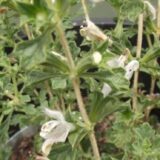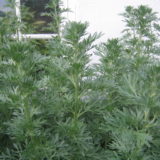Ancient Recipes and Plants Used for Herbal Teas
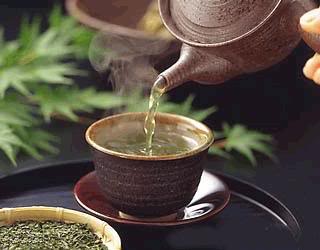
Indian and Tribal Herbal Teas
Many traditional recipes exist for herbal tea concoctions which originate from all over the world. Some herbal teas were used in ancient times and for religious purposes. Other herbal teas may have been used only recently, or even for recreational purposes. There are calming, sedating teas; and there are also stimulating teas. There are teas that have been popular for social gatherings…and there are even teas that are hallucinogens. Herbal teas typically refers to teas of a more relaxing sort…however, truly herbal teas used by shaman can be of many varieties. Tribes around the world have used herbal teas for so many different things, some teas being more sacred than others.
Herbal Teas Used by Indians and Tribes Still Used Today
There are many herbal tea recipes used by Indians and tribes around the world. These are some of the more traditional plants and herbs used to make herbal teas.
Anise hyssop
Anise hyssop is a common garden plant native to North America. It is also native to the Mediterranean and Asia. It smells great, and has a number of medicinal uses…but is very frequently used as a tea.
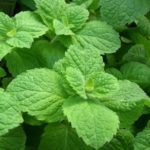 Apple mint
Apple mint
This plant is native to the Mediterranean and Europe. It is very aromatic and has both, a minty and a fruity type of flavor. The good flavors make Apple Mint a very common tea brewed throughout the world.
Bee balm
Bee balm goes by many names…including Oswego tea and Monarda. It is native to North America and has been used traditionally by the Native Americans for many purposes. It is more recently used in a variety of herbal teas, being combined with other plants to create interesting blends.
Chamomile
Perhaps one of the most well-known and commonly used herbal teas, Chamomile has been in the herbal tea spotlight. Typically the leaves are brewed in hot water and strained to leave a strongly relaxing, yet stimulating tea.
Holy basil
There are a few plants which are sometimes referred to as “Holy Basil,” making identifying the correct plant for use as an herbal tea a little more difficult (though they all have been used as teas, only one is popularly used for its relaxing effects). Verbena officinalis is the plant that possesses the renown sedating effects most people are looking for in their herbal tea.
 Lavender
Lavender
Lavandula is one of the most popular plants for use as a herbal tea. Many parts of the lavender plant can be used to make a tea in fact, with the buds and herbage alike being combined in a brew. It is sometimes brewed as a tea alone, but also mixed in a blend with other plants as well. It is a very common ingredient in black and green tea, as well as other “herbal” teas.
Lemon balm
Also known as Melissa officinalis, Lemon balm produces some sweet smelling leaves that have been long used in herbal tea recipes. It is also very commonly found mixed with peppermint to make a “peppermint tea.”
Lemon catmint
Nepeta cataria is frequently used in many herbal tea blends. It is simple to grow and thus is often cultivated in home gardens. The fresh leaves are used to brew fragrant, sweet tasting tea.
Lemongrass
Lemongrass, or Cymbopogon, is native to Asia, Africa and Australia. It is also found growing on many tropical islands. Although it has been used in many different types of foods and spices, it is very commonly found in herbal tea concoctions. Sometimes, it is the primary ingredient (even the only ingredient) in a herbal tea blend, while other times it is an additive among many other ingredients.
Lemon thyme
Thymus citriodorus has a powerful lemon scent (hence the common name), and it has been well known to be used as a tea for centuries. The leaves provide a powerful flavor that can make any tea more enchanting.
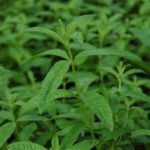 Lemon verbena
Lemon verbena
This plant is native to South America, but has been transplanted to Europe and North America. It can add a lemon flavor to a tea, even substituting for actual lemon, and thus, is very commonly found in many herbal teas around the world.
Pineapple mint
Also known as Mentha suaveolens and native to Europe and the Mediterranean…Pineapple mint is commonly found employed for a variety of culinary uses. It is mostly used as a spice or herbal tea ingredient.
Pineapple sage
Sometimes called “Tangerine sage” or referred to by its scientific name, Salvia elegans, this plant is native to Guatemala and Mexico. It is regularly brewed into an herbal tea in the area.
Germaniums (Rose, Lemon, and Peppermint)
There are many germaniums that are extremely commonly found in herbal tea blends. They provide fragrance, taste, and calming effects. Some are used in higher quantities than others.
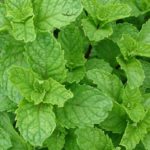 Spearmint
Spearmint
In modern times, Spearmint is found in many home gardens, and is cultivated nearly around the entire world. It is an ingredient in some of the more popular teas of many tribes and cultures of the world. There are even several sweet tea blends which have used Spearmint for flavoring.
Psychoactive Herbal Teas Used By Shaman and Medicine Men
There are many plants which are used to brew teas by shaman and medicine men for a number of tribal uses. Some of these plants are hallucinogenic, while others provide less-stimulating psychoactive effects. All of these plants are considered “more sacred” in nature, and can offer a more intense experience in a herbal tea blend.
Agara
Agara is native to New Guinea and has been respected as a sacred plant, and a hallucinogen. The bark and leaves of this tree are typically brewed with other plants (most notably one of the Homalomena species) to make a strong vision-inducing tea.
 Angel’s Trumpet
Angel’s Trumpet
Angel’s Trumpet is one of the most commonly used psychoactive plants throughout the South American Indian tribes, especially those of the Amazon. It can be used for many things. The leaves are sometimes brewed into a tea which can provide strong hallucinogenic effects and even subdue the user.
Blue Water Lily
Very popular in ancient Egypt (though still used today), the Blue Water Lily can be brewed into a tea that has strong sedative-like effects. It has often been compared to the prescription medicine xanax.
Galanga
New Guinea is filled with psychoactive plants and their routine use in the various cultures of the region. Galanga is a hallucinogen and intoxicant that is created in form of a tea from the leaves of the plant. It is a highly aromatic plant, also being used as a condiment and seasoning.
Kava Kava
Kava is often found in tropical territories being used as a social lubricant. There are Kava bars in some countries (essentially substituting Kava for alcohol). The tea is strongly stimulating.
Kieli (or Kieri, Hueipatl, Tecomaxochitl)
Kieli grows in Mexico and is well recognized by the Aztec Indians as a strong intoxicant and hallucinogen. It is sometimes combined with other plants, though, when brewed into a tea, can be used alone. The branches of the plant provide juices which are used to brew the tea.
Koribo
Koribo is native to the Amazon and has been very popularly employed by the Choco Indians of Colombia. The leaves make a tea that is used to treat diarrhea (usually it is combined with other plants to create herbal tea blends).

Kratom
Mitragyna speciosa is one of the most popular teas still used today for its psychoactive properties. It is native to Asia and tropical islands, but is regularly imported all around the world. Some strains of Kratom are brewed into a sedating tea that is used for religious ceremonies, while other tea blends are for social intoxication. Kratom has been regularly used as a substitute for alcohol.
Paguando
The Sibundoy Indians and the Kamsa tribes of Colombia employ Paguando as a powerful hallucinogenic and vision-inducing tea. It is well understood to be a strong intoxicant and the hangover is typically not good, lasting even several days.
Taique (or Borrachero, Latuy)
Also known by its scientific name, Desfontainia spinosa, it is a commonly employed hallucinogen in Chile and Colombia. The plant is known to be an intoxicant. The leaves and fruit are used to make a special tea used for medical diagnosis of disease by the medicine men of the Kamsa tribe.
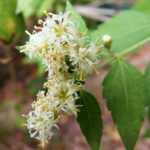 Zacatechichi (Aztec Dream Grass)
Zacatechichi (Aztec Dream Grass)
The Chontal Indians of Oaxaca, Mexico, used this grass for many medicinal purposes, and also as a calming plant. It is strongly psychoactive and even hallucinogenic, but found in many ancient tea preparations in the region.
Final Notes on Herbal Teas with Tribal and Shamanic Uses
Although herbal tea today may mean something far more “innocent” than what it may have meant a thousand years ago, there are herbal blends involving many types of plants still used around the world for nearly all purposes. There will always be use of herbs and plants in form of ceremonial teas among shaman and medicine men. There will always be herbal teas for relaxation, as well as for stimulation. There are also going to be herbal teas which are psychoactive and even hallucinogenic. Understanding the different constituents and corresponding psychoactive effects of each plant used in a herbal tea can help determine the overall expected effects. It is possible to make one’s own herbal tea blend with a little studying. One of the best relaxing herbal teas is Jolly Lotus, a premium blue lotus blend. It is sold by the ounce, which makes for a lot of tea!
